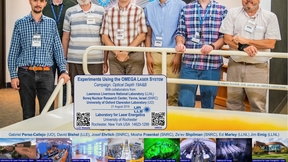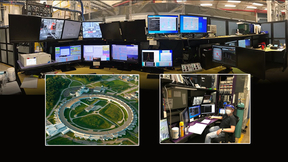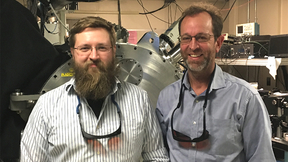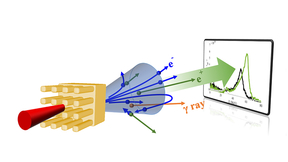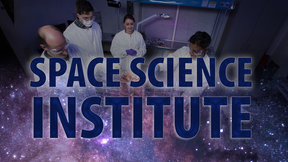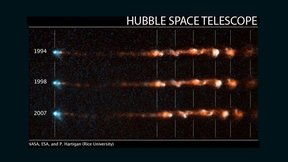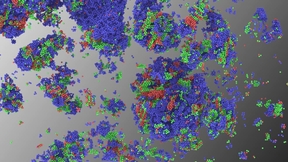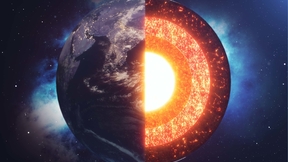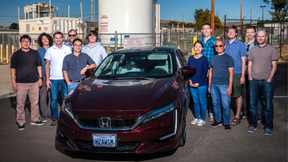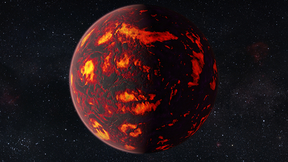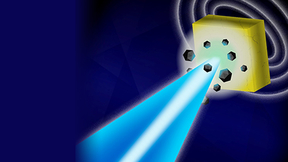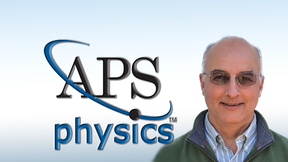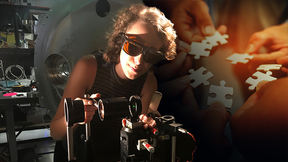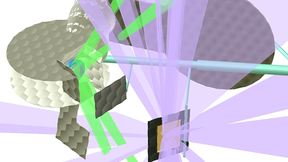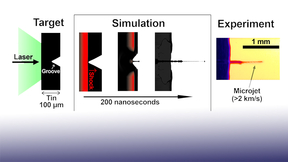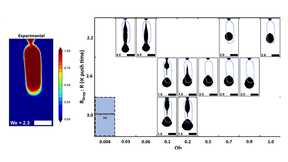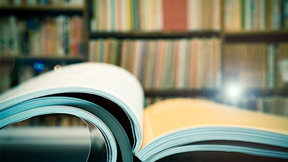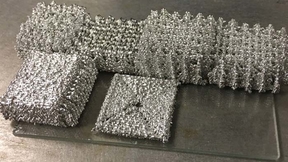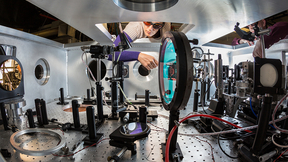Back
Physics
Researchers isolate geometric effects and resonant scattering in the X-ray spectra of HED plasmas
For the first time, researchers have isolated in a controlled laboratory setting the effects of the plasma geometry in its X-ray emission spectrum – the energy distribution of the radiation the plasmas emit. The work also is the first experimental testbed of the theories describing a phenomenon known in astrophysics as resonant scattering. This phenomenon is found in a…
HPCAT goes remote
Before the COVID-19 pandemic, HPCAT, a Chicago-based research consortium to advance high-pressure science in multidisciplinary fields using synchrotron radiation, hosted as many as 750 experimentalists each year—including numerous Lawrence Livermore National Laboratory (LLNL) teams. The consortium operates Sector 16 at the Advanced Photon Source (APS) at Argonne National…
Scientists put additive manufactured foams to the test
Lawrence Livermore National Laboratory (LLNL) scientists recently published the results of a three-week experimental campaign at the Lab’s Jupiter Laser Facility to test the performance of laser-heated additive manufactured foams. The project helps support two major Laboratory focus areas, including helping to advance additive manufacturing and by enabling improvements in…
Doubling creation of antimatter using same laser energy
Lawrence Livermore National Laboratory (LLNL) scientists have achieved a near 100 percent increase in the amount of antimatter created in the laboratory. Using targets with micro-structures on the laser interface, the team shot a high-intensity laser through them and saw a 100 percent increase in the amount of antimatter (also known as positrons). The research appears in…
Lab launches interdisciplinary Space Science Institute
What are the next world-class, game-changing concepts and technologies that will address the most important questions in astrophysics or planetary science? Lawrence Livermore National Laboratory (LLNL) researchers will soon be better equipped to answer this question with the launch this month of a new Space Science Institute (SSI), intended to boost cross-discipline…
Magnetic fields drive astrophysical jet shapes
Outflows of matter are general features stemming from systems powered by compact objects such as black holes, active galactic nuclei, pulsar wind nebulae, accreting objects such as Young Stellar Objects (YSO) and mature stars such as our sun. But the shape of those outflows, or astrophysical jets, vary depending on the magnetic field around them. In new experiments, a…
LLNL scientists discover a new way that metals freeze at extreme conditions
Since the dawn of civilization, metallurgy has determined the fate of powerful cities, states and empires. Blacksmiths have harnessed the power of heat to melt simple metals that would then be cast into hard, sharp and shiny alloys. Varying process conditions, such as rate of cooling and composition, can lead to new materials with dramatically different mechanical…
Lab team uses giant lasers to compress iron oxide, revealing the secret interior of rocky exoplanets
Advances in astronomical observations have resulted in the discovery of an extraordinary number of extrasolar planets, some of which are believed to have a rocky composition similar to Earth. Learning more about their interior structure could provide important clues about their potential habitability. Led by Lawrence Livermore National Laboratory (LLNL), a team of…
Scientists measure temperature under shock conditions
Temperature is tough to measure, especially in shock compression experiments. A big challenge is having to account for thermal transport — the flow of energy in the form of heat. To better understand this challenge, researchers from Lawrence Livermore National Laboratory (LLNL) have taken important steps to show that thermal conduction is important and measurable at high…
LLNL hydrogen researchers win technical program award
DOE’s Hydrogen and Fuel Cell Technology Office (HFTO) selected Brandon Wood and Tadashi Ogitsu (both MSD) for the 2020 Technical Program Area Award in Hydrogen Fuel R&D. This award recognizes the computational materials science team at LLNL for their exceptional support to the HydroGEN Advanced Water Splitting Materials and Hydrogen Materials Advanced Research…
NIF experiments probe carbon at record pressures
Carbon is one of the most ubiquitous elements in existence. As the fourth most abundant element in the universe, a building block for all known life and a material that sits in the interior of carbon-rich exoplanets, the element has been subject to intense investigation by scientists. Decades of studies have shown that carbon’s crystal structure has a significant impact on…
NIF conducts first-ever shot with explosives
The first-ever shot to study a high explosive sample was recently conducted at the National Ignition Facility (NIF), the world’s most energetic laser. The results from the shot included novel data that will help researchers unlock the mysteries of high-explosive (HE) chemistry and position Lawrence Livermore National Laboratory (LLNL) to continue its legacy as a leader in…
LLNL experimentalist climbing ranks of physics society
As an experimentalist at Lawrence Livermore National Laboratory (LLNL) developing diagnostics and experimental techniques in the field of dynamic high-pressure physics, Peter Celliers is on the path of leading a national topical group of the American Physical Society (APS). Celliers was recently elected to the executive committee as vice-chair of the American Physical…
Lab's ACT-UP awards focus on collaborative research
With a focus on increasing joint research efforts between Lawrence Livermore National Laboratory (LLNL) and universities, the Lab’s Weapon Physics and Design (WPD) Academic Collaboration Team (ACT) University Program has awarded this year’s ACT-UP awards. Now in its second year, the ACT-UP awards were created to encourage and advance strategic partnerships among…
Researchers develop broadband X-ray source needed to perform new measurements at NIF
Lawrence Livermore National Laboratory (LLNL) researchers have developed an X-ray source that can diagnose temperature in experiments that probe conditions like those at the very center of planets. The new source will be used to perform extended X-ray absorption fine structure (EXAFS) experiments at the National Ignition Facility (NIF). The work was published in Applied…
Microjets are faster than a speeding bullet
When a shock wave travels through material and reaches a free surface, chunks of material can break away and fly off at high speeds. If there are any defects on the surface, the shock forms microjets that travel faster than a speeding bullet. Understanding how these microjets form and how they interact with material help to improve spacecraft shielding and understanding a…
Lab study of droplet dynamics advances 3D printing
A team of Lawrence Livermore National Laboratory (LLNL) scientists has simulated the droplet ejection process in an emerging metal 3D printing technique called “Liquid Metal Jetting” (LMJ), a critical aspect to the continued advancement of liquid metal printing technologies. In the paper, the team describes the simulating of metal droplets during LMJ, a novel process in…
Lab scientists among most cited researchers worldwide
Fifty-seven researchers from Lawrence Livermore National Laboratory (LLNL) were among the top 2 percent of the most cited researchers worldwide throughout their careers, according to research on metascience by Stanford University. Metascience is the "study of studies" using scientific methods. Stanford University professor John Loannidis worked alongside U.S.-based Kevin…
Drop by Drop: A Promising Method for Printing Metal Parts
A novel additive manufacturing technique applies tiny droplets of molten metal layer by layer.
DOE awards $18 million to LaserNetUS consortium
LaserNetUS, a network of facilities operating ultra-powerful lasers including those at Lawrence Livermore National Laboratory (LLNL), has received $18 million from the Department of Energy (DOE) for user support. Established in 2018 by DOE, LaserNetUS is organized and funded by DOE’s Office of Fusion Energy Sciences (FES). The new network was created to provide vastly…


